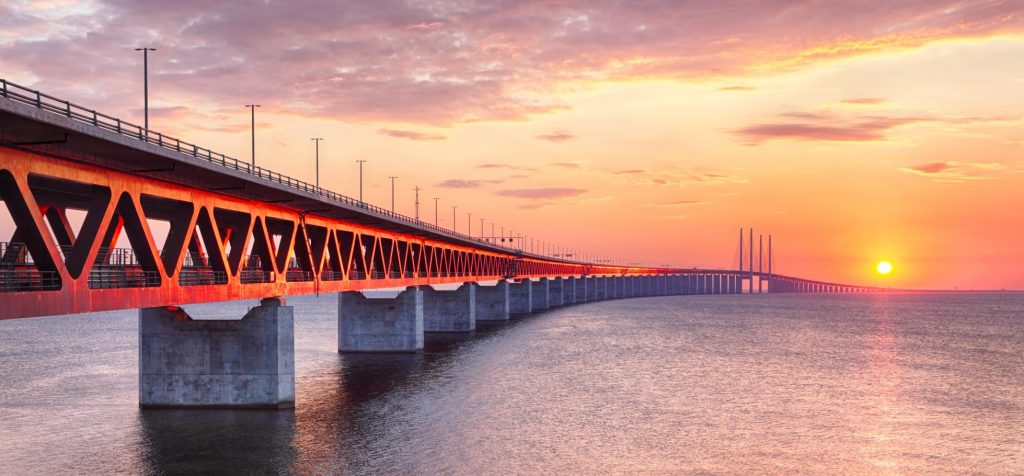It began as a bold engineering gamble and became a symbol of Scandinavian unity. The Øresund Bridge, which links Denmark and Sweden, has reshaped travel and even pop culture across the region.
Scandinavia is known for its high quality of life, sleek design and high cost of living. But it also has an unexpected global export: Nordic noir. Among the genre’s most iconic titles is the hit TV drama The Bridge.
In the opening episode, a body is discovered on the border between Denmark and Sweden, right in the middle of the Øresund Bridge. As the show gripped global audiences, the structure itself gained new fame.
This year marks the 25th anniversary of the Øresund Bridge’s opening, and new data shows just how much it has changed travel, commuting, and tourism across the region.
What began as a controversial megaproject is now a vital artery for everyday life and a symbol of Nordic integration in action.
An Icon Of Scandinavia
The Øresund Bridge is a remarkable feat of engineering: part bridge, part tunnel, stretching nearly five miles from Copenhagen to the man-made island of Peberholm, then continuing through a 2.5-mile tunnel to reach Malmö.
When it opened in July 2000, it was the largest infrastructure project in Scandinavia and also one of the most politically controversial. Early concerns about cost, environmental damage, and nationalism were widespread. Sweden’s environment minister even resigned in protest.
Yet today, the bridge is broadly seen as a success story. According to the Øresundsindex Jubilee report, cross-border integration is now at a record high.
Quarter-Century Of Travel Growth
Since the bridge’s first full year of operation in 2001, cross-border integration has accelerated dramatically. The Øresundsindex, which tracks nine key indicators of regional integration, has risen by 134% over that period.
In 2024 alone, the Øresund region recorded nearly 38 million journeys across the strait by car, train, or ferry. That includes 17 million car trips over the bridge, which is an all-time high. The 15 million train journeys is also a record.
The number of daily commuters reached 21,585, the vast majority of them Swedes traveling to jobs in Denmark’s capital region. Meanwhile, 1.3 million overnight stays were logged by travelers staying on the opposite side of the strait from where they live.
These figures point to a profound transformation in how people in Denmark and Sweden live, work and explore the region.
Danish healthcare worker Camilla Latifi, who moved to Malmö for love but continues to work in Denmark for financial reasons, told researchers that earning Danish wages while spending in Swedish kroner “just makes sense”, even factoring in the 90-minute roundtrip by train.
Two Scandinavian Cities Enjoying The Benefits
The cities of Malmö in Sweden and Copenhagen in Denmark have been the main beneficiaries of the bridge.
As well as serving local commuters, it gives international travelers arriving at Copenhagen Airport, the busiest in the Nordic region, an easy way to include Malmö and other parts of Sweden in their itinerary.
From the airport’s train station, it takes just 15 minutes to reach central Copenhagen and about 25 minutes to reach Malmö. Thanks to the Schengen Agreement, there is often little sign that you are crossing an international border.
For tourists, the appeal of visiting two culturally distinct cities in a single trip is hard to resist. Copenhagen offers world-class dining, cutting-edge design, and boutique hotels, while Malmö charms with its laid-back atmosphere and waterfront parks.
Crossing the Øresund Bridge by train or car adds to the experience, offering sweeping views of the strait and a tangible sense of crossing borders with ease.
With integration stronger than ever, attention now turns to the next phase of Nordic connectivity.
The Fehmarn Belt tunnel linking Denmark and Germany is under construction, promising faster connections to the continent. Meanwhile, infrastructure upgrades on both sides of the Øresund continue.

